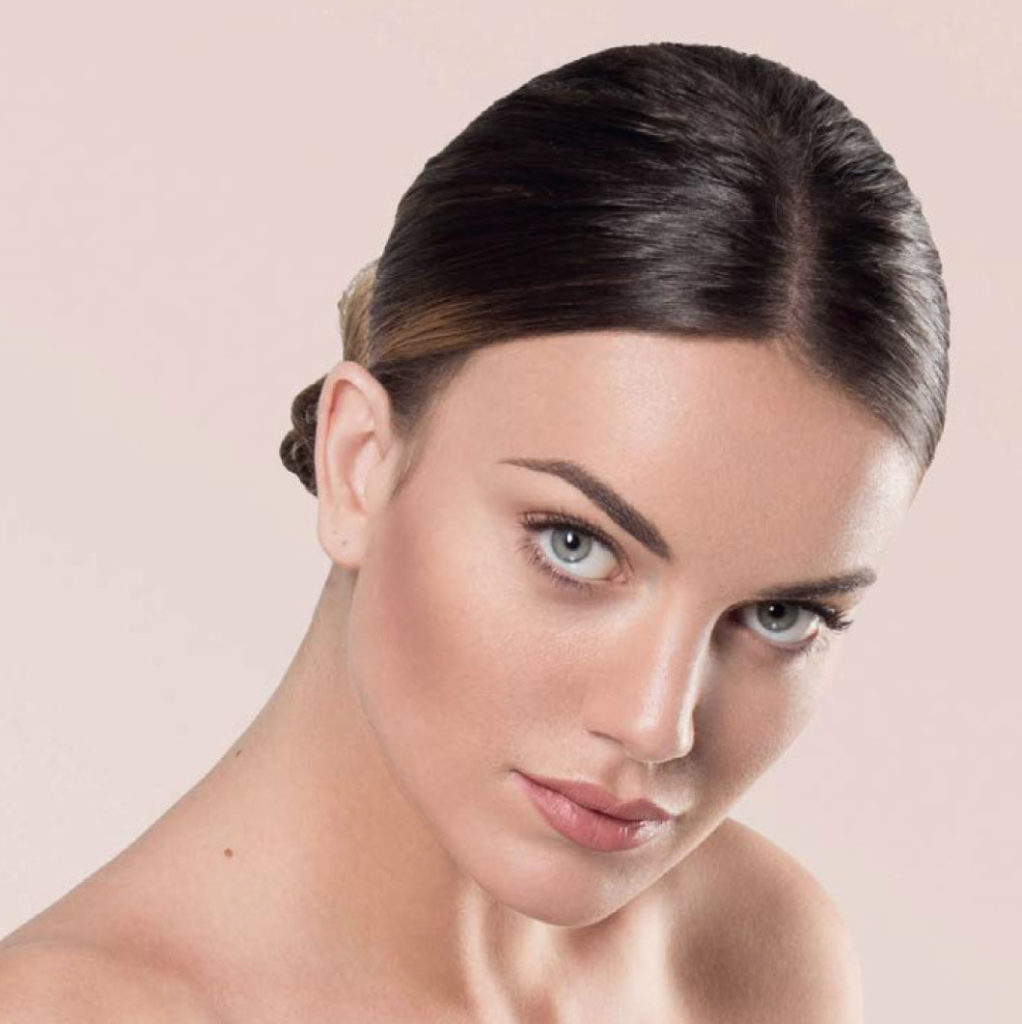Dr Véronique Emmenegger
“Beauty is in the eye of the beholder (Oscar Wilde)”
There are certain surgeries to which a systemised approach should never be applied and the eyelid lift, or blepharoplasty, is one such example. It is a surgery that should not be performed indiscriminately on patients of different ethnic origins, but should rather be carefully adapted to each face shape and ethnic type. It is important that the surgeon-specialist be sensitive to all the associated intricacies, as the appeal of the original eye aesthetic must be preserved and patients must be respected in their entirety.
 There are multiple factors that must be considered when deciding on the appropriate surgical strategy for an eyelid lift, including the shape and position of the eyebrows, the distance between the upper and lower eyelids, the distance between the eyelid fold and the eyelashes, the external angle of the palpebral fissure, the degree of eyelid laxity, the obliquity responsible for almond-shaped eyes, the presence of hollow upper eyelids or bags on the lower eyelids, eye colour, and the quality and texture of the skin. Given all these factors, the blepharoplasty can be considered more than just an eyelid surgery. It is, in fact, a surgery of the eye look as a whole. The experience and aesthetic sensitivity of the oculoplastic ophthalmologist are therefore just as important as his or her medical and technical expertise.
There are multiple factors that must be considered when deciding on the appropriate surgical strategy for an eyelid lift, including the shape and position of the eyebrows, the distance between the upper and lower eyelids, the distance between the eyelid fold and the eyelashes, the external angle of the palpebral fissure, the degree of eyelid laxity, the obliquity responsible for almond-shaped eyes, the presence of hollow upper eyelids or bags on the lower eyelids, eye colour, and the quality and texture of the skin. Given all these factors, the blepharoplasty can be considered more than just an eyelid surgery. It is, in fact, a surgery of the eye look as a whole. The experience and aesthetic sensitivity of the oculoplastic ophthalmologist are therefore just as important as his or her medical and technical expertise.
Respect for patients’ ethnic identity
For Caucasian patients, it is possible to correct not only excess skin, but also sunken, hollow eyelids (skeletonisation of the upper eyelid), sad eyes (drooping upper eyelids or ptosis) and tired-looking eyes (a reduced distance between the eyelids and loss of obliquity). In Asian patients, there is a great deal more fat present in the eyelids and the surgical strategy must be adapted accordingly.
Asian patients are often justifiably disappointed after having undergone an initial eyelid procedure which was unsuccessful owing to the alteration or loss of their uniquely Asian characteristics. The surgical strategy employed must respect and preserve these characteristics without fail. In the case of upper eyelid surgery, an incision is made in the eyelid fold, thus making the resultant scar imperceptible. The incision is closed with stitches that are removed a few days after the procedure. Recovery time until removal of the stitches is therefore short, but it is possible to return to work the day after surgery in, for example, a telework context.
An intricate affair
In terms of the lower eyelids and, in particular, fat pockets in that area, the latter must be removed internally. The procedure requires no stitches and there are therefore no scars, but, above all, there is never a risk of a round eye or scleral show. Recovery is faster than that for the upper eyelids. Very often, excess eyelid skin is a pretext for patients to have the fat pockets removed percutaneously with the possible disastrous result of a scleral show, while a re-tensioning of the lower eyelids is usually enough to address the problem of excess skin while still maintaining the overall eye look.
Contrary to what one might think, eyelid surgery for men requires just as much finesse as that for women. The fundamental difference between the two lies in the horizontality and thickness of the eyebrows in men, a particularity that must be taken into account in the surgical strategy.
Cosmetic eyelid surgery is therefore a surgical act that must take the overall eye aesthetic into account. Success of the act rests, above all, on the light and reflection restored to the eyes, which is why the blepharoplasty is much more intricate than it may seem. For those fortunate enough to have a naturally attractive eye aesthetic, a simple surgical refresh is usually sufficient. For those with other aesthetics, for example asym-metrical eyelids, the surgeon-specialist will need to employ more elaborate strategies that require modification of the original eye look.
A touch-free alternative for less severe cases
For individuals with less prominent imperfections (for example a slight drooping of the upper eyelids or a small amount of excess skin on the lower eyelids) who are reluctant to turn to surgery, there is a non-invasive technique available, the plasma lift, which requires no anaesthetic injections or scalpels. In fact, it is performed without even touching the skin.
ARTICLE CO-AUTHORED BY DR. EMMENEGGER AND PIERRE COULON, Oculoplastic ophthalmologist and specialist in cosmetic and reconstructive eyelid surgery at Clinic Lémanic in Lausanne.
 Dr Véronique Emmenegger is co-founder and Medical Director of Clinic Lémanic in Lausanne, FMH doctor who specialises in dermatology, venereology, allergology and clinical immunology, and who trained in medical laser techniques in Boston (United States).
Dr Véronique Emmenegger is co-founder and Medical Director of Clinic Lémanic in Lausanne, FMH doctor who specialises in dermatology, venereology, allergology and clinical immunology, and who trained in medical laser techniques in Boston (United States).
more : cliniclemanic.ch














